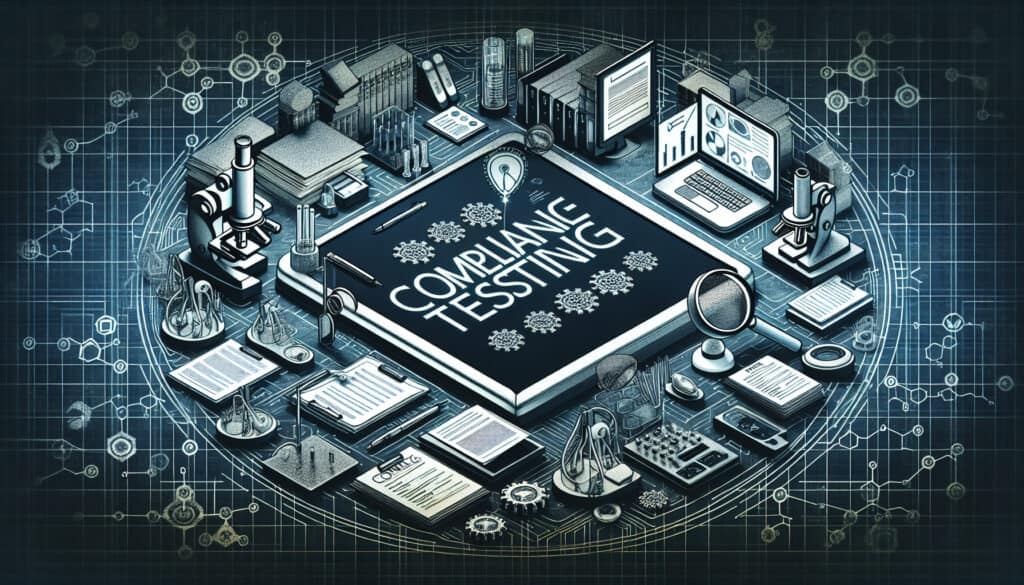The process of testing to determine whether a system or product meets a set of prescribed normes, règlements, or specifications.
- Méthodologies : Clients et marketing, Économie, Conception de Produits
Compliance Testing

Compliance Testing
- Assurance qualité, Gestion de la qualité, Règlement, Gestion des risques, Normes, Méthodes d'essai, Validation, Vérification
Objectif :
Comment il est utilisé :
- This type of testing verifies that a product adheres to specific rules, such as accessibility standards (WCAG), industry regulations (e.g., HIPAA in healthcare), or internal corporate standards.
Avantages
- Ensures legal and regulatory requirements are met, reduces the risk of fines and legal action, and can be a prerequisite for market entry.
Inconvénients
- Can be complex and requires deep knowledge of the specific standards, may add significant overhead and cost to the development process, and standards can change over time.
Catégories :
- Ingénierie, Qualité, Gestion des risques
Idéal pour :
- Verifying that a product or system adheres to specific laws, regulations, or standards.
Compliance Testing plays a fundamental role across various sectors such as consumer electronics, telecommunications, automotive, and healthcare, where strict adherence to regulatory standards is non-negotiable. In project phases involving validation de la conception or final testing, teams can conduct compliance assessments to ascertain that products not only meet specified legal guidelines but also align with industry benchmarks, thereby ensuring market readiness. For instance, software developments in healthcare must comply with HIPAA regulations, while electronic hardware may need to adhere to FCC guidelines. Involving multiple stakeholders in the testing phase, including engineers, quality assurance specialists, and legal advisors, is beneficial as it brings together expertise from different fields to ensure comprehensive compliance checks. Initiating these tests early in the product development cycle can identify potential shortcomings before they escalate, allowing for timely adjustments. Companies that prioritize compliance testing often see enhanced trust from consumers and business partners, paving the way for smoother market adoption. Furthermore, many industries require proof of compliance for certifications or approvals, which can be indispensable for accessing certain markets or securing contracts. This methodology not only mitigates risks related to regulatory non-compliance but also serves as a feuille de route for continuous improvement in product quality and user experience, highlighting its significance throughout the product development process.
Principales étapes de cette méthodologie
- Identify applicable laws, regulations, and standards for the product.
- Develop a compliance test plan outlining the specific criteria and methods for testing.
- Execute the compliance tests according to the test plan.
- Document the outcomes of each compliance test for evaluation.
- Conduct a gap analysis to identify areas of non-compliance.
- Implement corrective actions for any identified non-compliance issues.
- Re-test the product to verify compliance after implementing changes.
- Obtain certification or formal approval if required by regulatory bodies.
Conseils de pro
- Implement automated compliance testing tools early in the development cycle to identify potential gaps in adherence to standards like WCAG or HIPAA before they escalate.
- Conduct regular training sessions for cross-functional teams focused on existing regulations and standards, ensuring consistent understanding and application throughout the cycle de vie du produit.
- Establish a compliance audit framework that includes third-party assessments to validate adherence to both regulatory and internal standards, enhancing credibility and market readiness.
Lire et comparer plusieurs méthodologies, nous recommandons le
> Référentiel méthodologique étendu <
ainsi que plus de 400 autres méthodologies.
Vos commentaires sur cette méthodologie ou des informations supplémentaires sont les bienvenus sur le site web de la Commission européenne. section des commentaires ci-dessous ↓ , ainsi que toute idée ou lien en rapport avec l'ingénierie.
Contexte historique
1962
1970
1972
1980
1980
1986
1986
1960
1963
1970
1980
1980
1980
1986
1987
(si la date est inconnue ou n'est pas pertinente, par exemple "mécanique des fluides", une estimation arrondie de son émergence notable est fournie)















Articles Similaires
Questionnaires sur les troubles musculo-squelettiques
Tests à plusieurs variables (MVT)
Analyse de régression multiple
Systèmes de capture de mouvement
Méthode MoSCoW
Test de la médiane de Mood